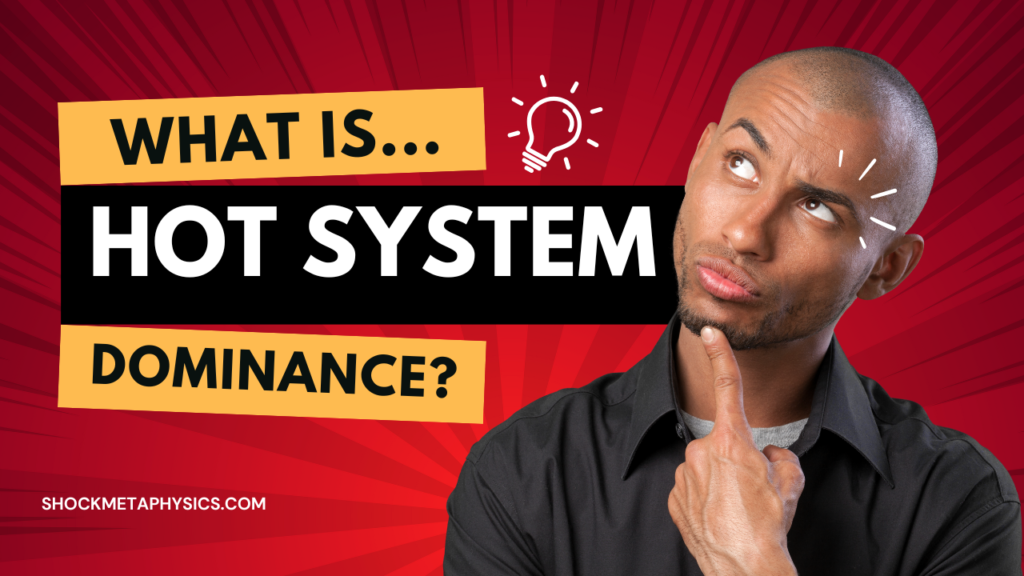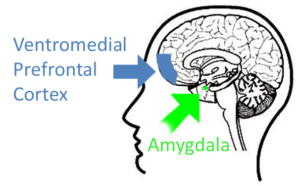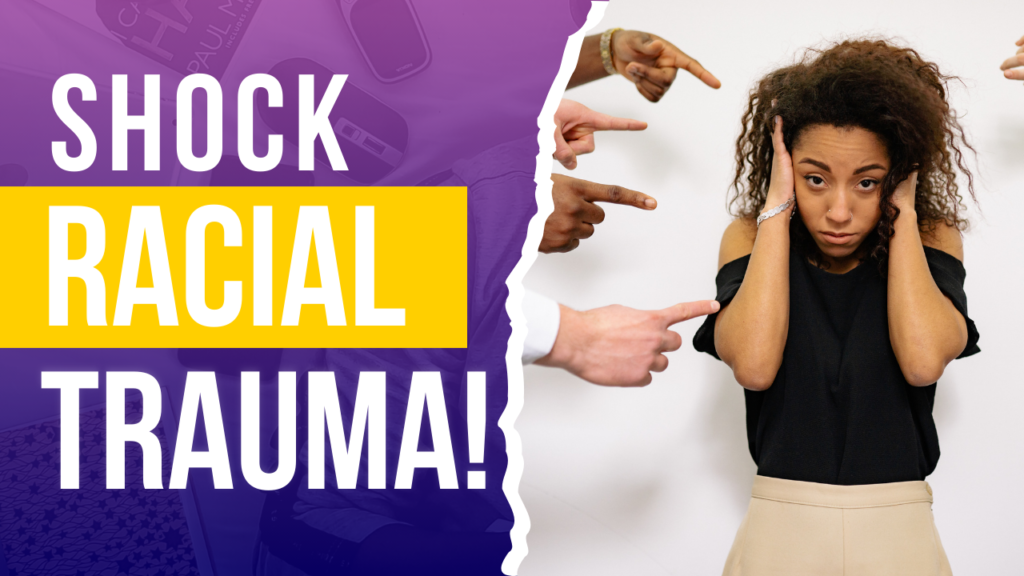
Powered By BlackTraumaGPT.com
Researched and Curated By Rev. Dr. Philippe SHOCK Matthews
(Black Trauma and Mental Health Specialist | Prompt Eng | GPT Dev | Research Scientist | Africana Phenomenologist | Black AI Corsortim co-Founder | Black Mental Health Podcast Host)
Introduction:
Trauma, especially when chronic or systemic, leaves deep imprints on the brain and body, shaping how we perceive, react, and heal. For Black communities, the trauma of systemic racism, violence, and the intergenerational weight of the MAAFA (the Black Holocaust) compounds the impact on emotional and mental well-being. One crucial aspect of understanding how trauma rewires the brain is through the lens of hot system dominance—a state where our emotional, reactive brain takes control, often at the expense of rational thinking and emotional regulation.
In this post, you will learn about how the hot system dominates in the face of trauma, its role in Black trauma, and how it disrupts key areas of the brain, particularly the ventromedial prefrontal cortex (vmPFC). More importantly, we explore healing strategies that help shift away from this emotionally charged survival mode, empowering individuals and communities to reclaim mental and emotional stability in the face of systemic oppression. Join us as we uncover the science behind trauma and offer pathways to resilience and recovery grounded in culturally informed practices.
How Does The vmPFC Respond To Trauma

The ventromedial prefrontal cortex (vmPFC) is a crucial region of the brain located in the lower central part of the prefrontal cortex, near the front of the brain. It plays a significant role in emotion regulation, decision-making, and social cognition. The vmPFC helps integrate emotional and cognitive processes, linking how we feel with how we think and respond to situations.
The ventromedial prefrontal cortex (vmPFC) plays a significant role in how the brain processes, regulates, and responds to trauma. Understanding its response to trauma helps us explore both the immediate and long-term impacts of traumatic events on mental health, especially in the context of Black trauma.
Role of the vmPFC in Trauma:
- Emotional Regulation: The vmPFC helps regulate emotional responses by dampening activity in the amygdala, which is responsible for fear and threat detection. When the brain is exposed to trauma, this regulation can be disrupted, leading to heightened emotional responses and difficulty managing fear, anxiety, or other intense emotions. In cases of chronic or severe trauma, the vmPFC’s ability to suppress these fear responses can weaken, resulting in hypervigilance and heightened sensitivity to threats.
- Contextualizing Threats: The vmPFC also aids in distinguishing between safe and threatening environments. In people with trauma histories, particularly those with PTSD (Post-Traumatic Stress Disorder), the vmPFC may have trouble correctly assessing safety cues, causing individuals to feel threatened even in non-dangerous situations. This overgeneralization of threat perception can lead to constant feelings of danger or insecurity.
- Memory and Extinction of Fear: One of the critical functions of the vmPFC is helping the brain “extinguish” fear responses through exposure to new, safe experiences. After trauma, this process can be impaired. The vmPFC plays a role in creating new associations that allow someone to unlearn or lessen their fear responses to previously traumatic stimuli. However, trauma can impair the vmPFC’s ability to help extinguish these fears, leading to prolonged fear responses and difficulty “moving past” traumatic experiences.
- Long-Term Impact of Trauma: Chronic trauma, such as what is often experienced by Black communities in the context of systemic racism, historical oppression, and intergenerational trauma, can impair the vmPFC’s functioning over time. Studies on trauma and PTSD show reduced activity or structural changes in the vmPFC, making it more challenging for individuals to regulate emotions, process fear, and adapt to everyday life after traumatic events. In some cases, this is seen in the form of heightened responses to triggers or emotional numbness.
Impact on Black Trauma:
In the context of Black trauma—whether through experiences of police violence, racism, microaggressions, or the inherited trauma of the MAAFA (the Black Holocaust, which encompasses the transatlantic slave trade and its enduring legacies)—the vmPFC’s dysfunction can exacerbate mental health issues like anxiety, depression, and PTSD. Systemic racism creates constant stressors that can reinforce fear responses and hinder the healing process, putting more strain on the vmPFC’s role in emotional regulation and threat assessment.
Moreover, the intergenerational aspect of Black trauma can mean that vmPFC dysfunction or heightened sensitivity to trauma may be passed down through generations, contributing to a cycle of emotional dysregulation and heightened stress responses within Black communities. Addressing trauma from a culturally informed perspective that includes understanding this biological component is critical to healing.
Healing and Strengthening the vmPFC:
Healing practices aimed at improving the functioning of the vmPFC include:
- Mindfulness and Meditation: These practices are known to increase the activity in the vmPFC, aiding in better emotional regulation and fear extinction.
- Therapies like Cognitive Behavioral Therapy (CBT): CBT can help retrain the brain to respond to threats more appropriately and reduce PTSD symptoms by activating the vmPFC.
- Community and Cultural Healing Practices: Emphasizing culturally sensitive approaches that resonate with Black experiences, such as group healing circles, spiritual traditions, and artistic expression, can help the brain reframe traumatic experiences and foster emotional regulation.
Understanding how trauma affects the vmPFC highlights the importance of culturally informed mental health interventions for Black communities, where chronic exposure to trauma is often deeply intertwined with systemic oppression. Empowering the brain to regulate emotions through both individual and collective healing practices is essential for recovery.
How Does Hot System Dominance Play A Role?
Hot system dominance refers to the brain’s reliance on emotionally driven, impulsive, and reactive responses, particularly when under stress or faced with trauma. This concept comes from the “hot vs. cool” system model of emotional regulation, which highlights two distinct ways the brain processes experiences, especially in emotionally charged or traumatic situations.
- Hot System: This system is fast, reactive, emotional, and impulsive. It is governed primarily by regions like the amygdala and is designed to respond quickly to threats or stressors (the “fight-or-flight” response).
- Cool System: This system is slower, more deliberate, and reflective. It is associated with higher-level thinking, decision-making, and emotional regulation, typically involving the prefrontal cortex, including the ventromedial prefrontal cortex (vmPFC).
Hot System Dominance and Trauma:
In trauma, particularly chronic or severe trauma, the brain often shifts into hot system dominance, where the emotional, reactive parts of the brain (like the amygdala) become hyperactive. This dominance can have several impacts:
- Heightened Emotional Reactivity: Trauma tends to increase the sensitivity and activity of the amygdala, the brain’s center for fear and threat detection. When the hot system dominates, a person is more likely to respond impulsively and emotionally to situations, even when they aren’t in immediate danger. In traumatic environments, the brain defaults to this survival mode, prioritizing immediate, instinctual reactions over more thoughtful responses. For people dealing with Black trauma—whether stemming from police violence, daily microaggressions, or systemic racism—this heightened reactivity can manifest as hypervigilance or anxiety.
- Impaired Decision-Making: When the hot system takes over, the cool system (responsible for rational thinking and emotional regulation) becomes suppressed. This suppression is particularly relevant in trauma, as the vmPFC, a part of the cool system, is often compromised. With the vmPFC unable to regulate emotional responses effectively, individuals may find it difficult to assess situations rationally, leading to more impulsive decisions or reactions, particularly in high-stress situations that feel threatening or emotionally charged.
For example, someone who has experienced chronic racial trauma may react intensely to situations that resemble past traumas, even when they are not directly threatening. The inability of the cool system to override this reactive state means the person may struggle to distinguish between safe and dangerous contexts.
- Difficulty with Emotional Regulation: One of the core functions of the vmPFC in the cool system is to regulate the emotional responses driven by the amygdala. However, when trauma leads to hot system dominance, the vmPFC’s ability to dampen fear and regulate emotions is diminished. This can make it difficult for individuals to calm down after a triggering event, extending the emotional and physiological effects of trauma long after the initial incident.
For Black people living in environments of chronic stress or systemic oppression, this can lead to prolonged states of hyperarousal and stress, compounding the negative mental health effects associated with trauma.
- Impact on Learning and Adaptation: In trauma survivors, especially those who experience ongoing or repeated trauma, hot system dominance can affect how the brain learns from and adapts to experiences. Normally, the cool system allows us to learn from mistakes, reflect on experiences, and form adaptive strategies for future challenges. However, when the hot system dominates, the brain is more likely to fall into maladaptive patterns of behavior—such as avoidance, aggression, or dissociation—as a way to cope with ongoing stress. This impacts the brain’s ability to form healthy coping mechanisms or to recover from trauma.
Black Trauma and Hot System Dominance:
For Black individuals and communities facing ongoing systemic trauma—such as racism, discrimination, poverty, and violence—hot system dominance can perpetuate a cycle of fear and emotional dysregulation. This can manifest in several ways:
- Hypervigilance: Constantly being on alert for potential threats (whether physical, emotional, or racial) due to the trauma of racial oppression can keep individuals in a chronic state of hot system dominance. This state of hyperarousal affects both mental and physical health, contributing to stress-related disorders like hypertension and anxiety.
- Intergenerational Trauma: Trauma passed down through generations, such as the historical trauma of slavery and colonialism (known as the MAAFA), can prime future generations to rely more on the hot system. This results in heightened emotional reactivity, particularly in response to racially charged situations, even when the original trauma has not been directly experienced.
- Survival Mode: For many in marginalized Black communities, living in survival mode—where immediate emotional and physical responses are necessary to navigate everyday systemic barriers—can keep the brain locked in hot system dominance, making long-term emotional regulation and healing difficult to achieve.
Healing from Hot System Dominance:
Healing from hot system dominance, especially in the context of Black trauma, requires strategies that help strengthen the cool system (including the vmPFC) and bring the hot system under control:
- Mindfulness and Meditation: These practices help to calm the hot system and activate the vmPFC. Mindfulness-based practices have been shown to reduce amygdala activation and increase prefrontal cortex functioning, allowing for better emotional regulation and more thoughtful responses to stress.
- Therapeutic Interventions (e.g., CBT, Somatic Experiencing): Therapies that focus on trauma can help individuals recognize when they are in hot system dominance and teach strategies to shift back into the cool system. Somatic-based approaches, like Resmaa Menakem’s somatic abolitionism, focus on healing trauma in the body and can help reduce the physiological reactivity associated with hot system dominance.
- Culturally Informed Healing Practices: Engaging in collective healing practices, such as community support, artistic expression, and spiritual traditions rooted in Black culture, can help individuals reconnect with the cool system. These practices offer opportunities for reflection, emotional expression, and safe spaces to process trauma, reducing the brain’s reliance on impulsive emotional responses.
- Building Resilience: Supporting Black resilience through education, advocacy, and structural changes that reduce the everyday stressors of systemic racism can help break the cycle of hot system dominance. Addressing the root causes of trauma allows for the possibility of collective healing and emotional regulation.
In summary, hot system dominance plays a critical role in how the brain responds to trauma, particularly for Black individuals and communities experiencing chronic systemic oppression. Understanding and healing from this dominance requires both individual and collective efforts to strengthen emotional regulation and challenge the ongoing impacts of systemic racism.
Enjoying Our Content?
Become a member of our Patreon to get the latest research on Racial Black Trauma and learn the hidden science behind why Black people are God’s/Amma’s greatest creation! https://www.patreon.com/revshock. Or buy Rev. SHOCK a Coffee! https://bit.ly/3yg5D7A


Book A Discovery Call
Are you ready to SHOCKtrauma? Click HERE now to book a discovery call with Rev. Dr. Philippe SHOCK Matthews

Get Social with Doc SHOCK:
PATREON: https://t.ly/mjksf | REV. DR. SHOCK (PERPLEXITY PAGE): https://t.ly/ppjwh | SOLO: https://solo.to/revshock | BIO: https://t.ly/Ko_y_ | BLOG: https://t.ly/j6bh0 | PODCAST: https://t.ly/cB5GD | ENDORSEMENT: https://t.ly/jFErO | THREADS: https://t.ly/SoKkT | IG: https://t.ly/XsN8f | FB: https://t.ly/R3r9Y | X: https://t.ly/iJ-wy | LINKEDIN: https://t.ly/GZ0pe | TIKTOK: https://t.ly/zfp60 | BLACK TRAUMA GPT: https://t.ly/vswbs | BLACK AI CONSORTIUM: https://t.ly/uiRZN | BOOKS BY PM: https://t.ly/vvHMd

Greetings Dr. Rev SHOCK,
” Hot System Dominance”; this is tomahawk steak size abstracted research literature. The video dialogue was very concise and very easy to understand. Thank You So Much for Sharing
You are very welcome, beloved Sandra! Thank you so much for reading and commenting.